Welcome to the Green Thumb Journey: Comprehensive Planting How To Guide! If you’re a beginner interested in gardening, this guide is here to help you every step of the way. Gardening is an excellent way to reconnect with nature, improve your mental and physical health, and produce fresh, nutritious produce. Our comprehensive guide provides all the necessary information for beginners to start their gardening journey successfully.
Key Takeaways:
- The comprehensive planting guide covers topics such as selecting the right plants, soil science and composting, essential tools and equipment, garden layout and design, watering techniques, pruning, pest management, indoor gardening, year-round planting, troubleshooting common issues, and joining gardening communities.
- The guide emphasizes the importance of selecting plants based on climate and space, mastering soil fertility and drainage, choosing appropriate tools, planning garden layouts for optimal sunlight exposure, proper watering techniques, regular maintenance, natural pest control methods, exploring different gardening styles, and engaging with gardening communities for advice and support.
- Beginners will find helpful tips and answers to frequently asked questions, such as gardening in limited outdoor space, watering frequency, natural pest control, cultivating vegetables indoors, and finding more gardening guidance.
Selecting the Right Plants
When it comes to planting, selecting the right plants is crucial for a successful garden. As a beginner, it’s important to consider factors such as sunlight availability, water demands, and available space when choosing plants. Some plants require full sun, while others thrive in partial or even full shade. Be sure to read the plant label or ask a nursery professional for advice on the best placement for your chosen plants.
Watering needs can also vary greatly between different plant species. Some plants, like succulents, prefer dry conditions and may only need to be watered once a week. Others may require daily watering, especially during hot summer months.
Healthy soil is essential for a flourishing garden. Before planting, it’s important to prepare your soil with organic matter like compost or fertilizer to improve soil fertility and drainage. Tools like a spade, pruners, gloves, and a watering can or hose are indispensable for proper planting and maintenance.
Effective planning and layout design are crucial for a successful garden. Be sure to consider the space you have available and plan accordingly. If you’re limited on space, container gardening is a great option. You can also consider vertical gardening to maximize your space. Precision watering and regular maintenance are key to ensuring your garden thrives.
Pest control can be addressed with natural methods before resorting to potentially harmful chemicals. Companion planting, which involves planting certain plants together to deter pests, is one effective method. Additionally, you can make natural pest repellents using ingredients like garlic and hot peppers.
Exploring different gardening styles, such as raised bed gardening or traditional in-ground gardening, can also be helpful in determining what works best for you. Indoor gardening options are also available for those with limited outdoor space or who want to enjoy gardening year-round. When planting, it’s important to understand the optimal planting times for specific plants in different seasons.
Harvesting should be done when fruits and vegetables are ripe. When selecting fruits and vegetables, look for those that are plump and fragrant. For best flavor, use within a few days of harvesting.
If you encounter common issues like pests or plant diseases, don’t worry! Troubleshooting tips are available through online gardening communities and literature. Joining a gardening club can also provide support and knowledge from experienced gardeners.

Soil Science and Composting
Understanding soil science and incorporating composting into your gardening routine can greatly benefit your plants. Soil is the foundation of any garden, and healthy soil leads to healthy plants. Composting kitchen scraps and garden waste is a natural way to enhance soil fertility, providing important nutrients and promoting healthy microbial activity.
Improving soil fertility is just one aspect of soil science. Understanding your soil type, pH level, and nutrient content can also help you choose the best plants for your garden and determine the proper care they need. Testing your soil can be done with a simple soil test kit or by sending a sample to a soil testing laboratory. With this information, you can make informed decisions about fertilization and soil amendments.
Composting can be done in a variety of ways, from simple backyard piles to more intricate composting systems. Kitchen scraps such as fruit and vegetable peels, coffee grounds, and eggshells can be composted along with yard waste such as leaves and grass clippings. The resulting compost can then be added to your soil to improve its overall health and fertility.
In addition to proper soil care, it is also important to have the right tools and equipment for gardening. This can include everything from gloves and a trowel to larger equipment such as a shovel or tiller. Using the proper tools for the job can make gardening much easier and more efficient.

When it comes to soil and composting, it’s important to remember that each garden is unique and may require specific care and attention. Consulting gardening resources and experts can provide additional guidance and support for your gardening journey.
Essential Tools and Equipment
Having the right tools and equipment is essential for a smooth and efficient gardening experience. As a beginner, there are a few basic tools that I recommend investing in, including a spade for digging and loosening soil, pruners for trimming plants, gloves to protect your hands, and a watering can for easy watering.
It’s important to choose sturdy, high-quality tools to ensure they last and can handle the demands of gardening. If you plan on composting, adding a compost bin to your essentials list is also a great idea. A watering system, such as a drip irrigation system, can also save time and ensure proper watering. Mulching is another important aspect of gardening, helping to retain moisture and curb weed growth.
Designing a garden layout that maximizes sunlight exposure and optimizes space is equally important. Consider the plants you want to grow and their specific sun and shade needs when deciding where to place them. Regular maintenance, including pruning and pest control, is necessary for a thriving garden.
Indoor gardening is another style of gardening that offers a variety of design possibilities for any space. Consider growing plants in pots or vertical gardens if you have limited space or want to bring some greenery indoors.
Lastly, joining gardening communities and sharing experiences with seasoned enthusiasts can provide valuable insights and advice. Don’t be afraid to ask questions and seek guidance from those who have been gardening for years.
Garden Layout and Design
Creating a well-planned garden layout and design is key to a visually appealing and harmonious outdoor space. Before planting, it is important to consider the available space, sunlight exposure, and climate conditions. Raised beds are a great option for beginners, as they can be easily constructed and can enhance drainage and soil quality.
When laying out your garden, consider the placement of plants based on their height, growth patterns, and water needs. Utilize space efficiently by planting vertically and choosing plants that can serve multiple purposes, such as ground cover or shade for other plants.
There are various garden styles to choose from, ranging from structured to cottage gardens. A structured garden emphasizes clean lines and geometric shapes, while a cottage garden offers a more natural and relaxed feel. Take your personal preferences into consideration when choosing a style that aligns with your vision for your outdoor space.
Indoor gardening is also a viable option for those with limited outdoor space. Choose plants that thrive in low light conditions, and ensure proper ventilation and humidity levels. Consider using grow lights to supplement natural light, and incorporate vertical gardening techniques to maximize space.
Remember to regularly maintain your garden through proper watering techniques, pruning, and pest management. Deep, infrequent watering encourages deep root growth, while mulching can help retain moisture and prevent weed growth. Knowing the optimal planting times for specific plants and harvesting fruits and vegetables when ripe are also important factors to consider.
If you encounter common gardening issues such as pests or diseases, seek guidance from experienced gardeners or join gardening communities for support. With patience and care, anyone can create a flourishing garden, regardless of their available space limitations.
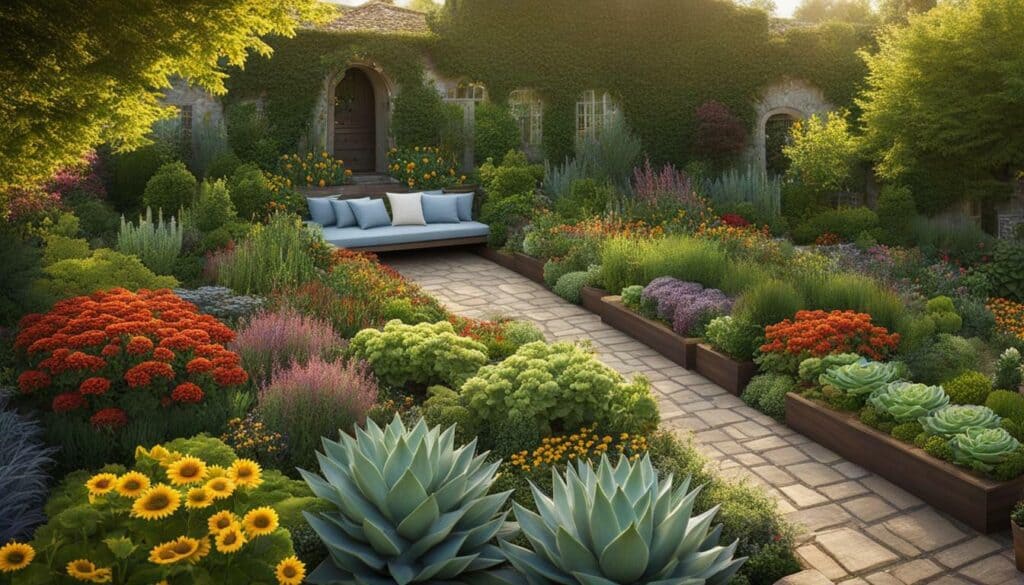
Watering Techniques
Proper watering techniques are crucial for maintaining healthy plants and promoting their growth. As a beginner, it is important to understand that overwatering and underwatering can cause damage to your plants. To avoid these issues, it is recommended to water deeply yet infrequently, allowing the soil to dry out slightly between watering sessions.
One important factor to consider when watering your plants is the type of plant you are growing. Different plants have varying water requirements, and it’s essential to research your specific plants to ensure you are providing the right amount of water. Weather conditions and soil moisture levels should also be taken into account when determining watering frequency.
Mulching your garden can help retain moisture and prevent weed growth. Applying a layer of mulch around the base of your plants can also help regulate soil temperature and protect roots from extreme weather conditions.
It’s important to monitor your plants regularly for signs of pests and diseases, as these can also affect plant health and growth. Promptly addressing these issues can prevent further damage and ensure the continued health of your plants.
Joining gardening communities and seeking guidance from experienced gardeners can provide valuable insights and support in improving your watering techniques. By following these tips and continuing to learn and improve, you can enjoy a thriving garden full of healthy, beautiful plants.
Pruning
Pruning is an essential practice that helps plants thrive and maintain their optimal shape. It involves trimming away dead or overgrown branches, tackling weeds, and staying vigilant for signs of ailments. By regularly maintaining your plants through pruning, you can ensure their health and appearance.
When pruning, it’s important to use the right tools and techniques. Make clean, angled cuts just above a node or bud to promote new growth. Avoid leaving stumps or ragged edges, as these can create entry points for diseases and pests. Different types of plants require different techniques, so it’s important to research the specific needs of your plants before pruning.
Pruning also plays a role in pest management, as it helps to remove areas where pests can hide. By removing diseased or damaged areas of the plant, you can prevent the spread of pests and diseases and keep your garden healthy.
Joining local gardening clubs and online forums can be a great way to learn from experienced enthusiasts and share your own experiences. These communities can provide helpful tips and advice on pruning and other aspects of gardening.
Remember, successful gardening also involves selecting the right plants for your environment, providing the correct amount of water and sunlight, fertilizing at the right time, and repotting when necessary. By following these best practices, you can create a thriving garden that brings joy and beauty to your home.
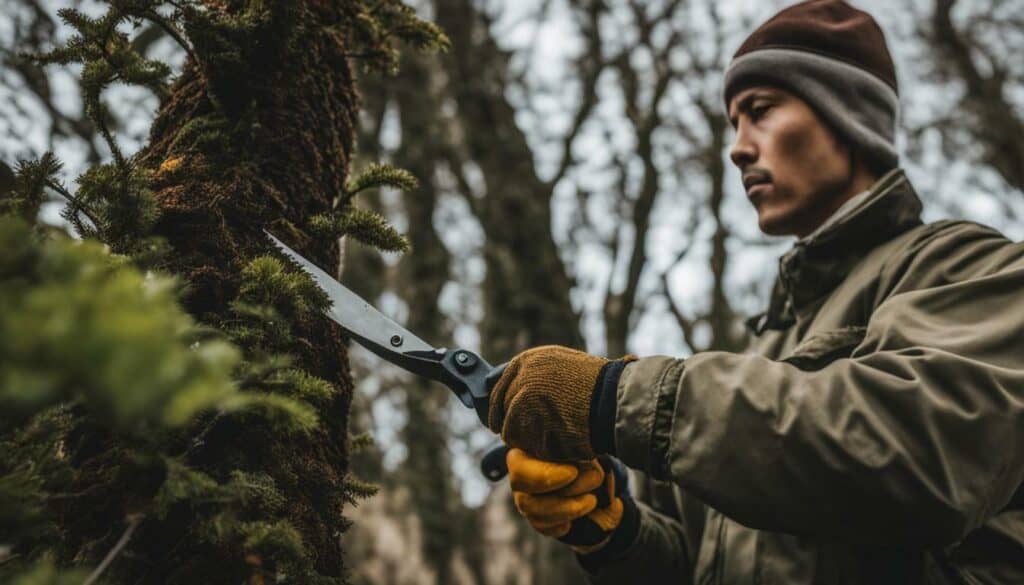
Pest Management
Effectively managing pests is crucial for protecting your plants and ensuring their well-being. As a gardener, it is important to take proactive measures to identify and address pest issues before they become out of control. Chemical interventions should only be used as a last resort, with a strong preference for natural pest control methods.
One effective method is introducing beneficial insects such as ladybugs, wasps, and lacewings, which feed on common pests like aphids and caterpillars. Another option is using neem oil, a natural insecticide derived from the neem tree, which can be sprayed directly onto plants to deter pests.
Regular maintenance, such as trimming away lifeless branches and tackling weeds, is essential for a thriving garden. Weeds can harbor pests and diseases, so it is important to keep them under control. Removing dead branches can also prevent pests from taking up residence in your plants.
When troubleshooting common issues like yellowing leaves, pests, and diseases, it is important to seek advice from gardening communities and utilize online resources. Joining local gardening clubs and online forums can provide valuable insights and allow you to exchange experiences with seasoned enthusiasts.
If you have limited outdoor space, indoor gardening is a viable option. Plants like succulents and herbs can thrive on windowsills or counters with the proper amount of light and care. Understanding optimal planting times for different seasons can also maximize growth and ensure a bountiful harvest.
By prioritizing natural pest control methods, practicing regular maintenance, and seeking advice from gardening communities, you can effectively manage pests and cultivate a vibrant and thriving garden with dedication and care.
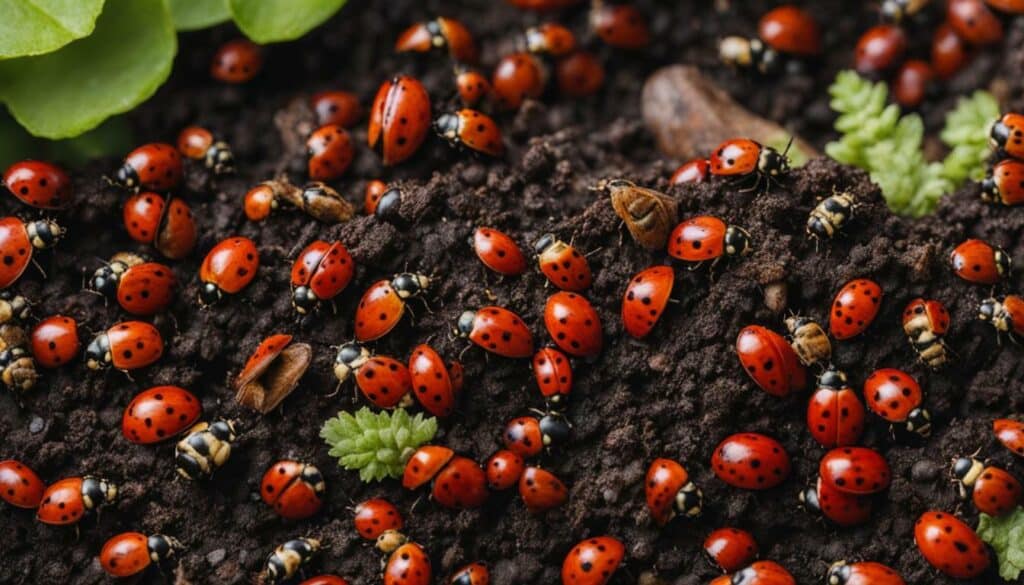
Indoor Gardening: Cultivating Plants Indoors
Indoor gardening opens up a world of possibilities for plant enthusiasts, allowing you to bring greenery into your home all year round. Whether you have limited outdoor space or simply prefer to keep your plants within arm’s reach, cultivating plants indoors is a fulfilling and popular pastime. However, it is essential to understand the basics before starting an indoor garden, to ensure your plants thrive in their new environment.
One of the first steps to successful indoor gardening is selecting the right plants. Factors such as the availability of light, humidity, and temperature must be considered, as well as personal preferences. Choosing plants that are known to do well indoors, such as Sansevieria, succulents, peace lilies, and African violets, is a great place to start for beginners.
Understanding soil science and composting is another fundamental aspect of indoor gardening. Proper care of the soil can make all the difference in the health and growth of plants. Composting organic matter from your kitchen scraps or yard waste can improve soil fertility and provide a natural source of nutrients for your indoor plants.
Having the right tools and equipment is also important for indoor gardening. Investing in a quality watering can, pruning shears, and fertilizers can help ensure the best possible care for your plants. Designing the layout of your indoor garden to maximize space and functionality can also make a big difference in the success of your garden.
Watering techniques must also be carefully considered when it comes to indoor gardening. Overwatering or underwatering can be detrimental to plant health, so understanding the watering frequency and amount of water required for each type of plant is essential. Additionally, using a moisture meter or checking the soil before watering can help ensure proper care of your plants.
Pest management is another aspect of indoor gardening that cannot be overlooked. Natural pest control methods and preventive measures can help keep your plants healthy and pest-free. It is important to address any pest issues as soon as possible to prevent damage to the plants.
Exploring different gardening styles, like hydroponics or terrariums, can also add variety to your indoor garden and introduce new and exciting ways to cultivate plants indoors. Joining gardening communities and learning from experienced enthusiasts can provide valuable insight and support for your indoor gardening journey.
Indoor gardening offers endless possibilities for bringing your love of plants into your home. By understanding the basics, choosing the right plants, and providing proper care and attention, anyone can transform their living space into a thriving indoor garden.
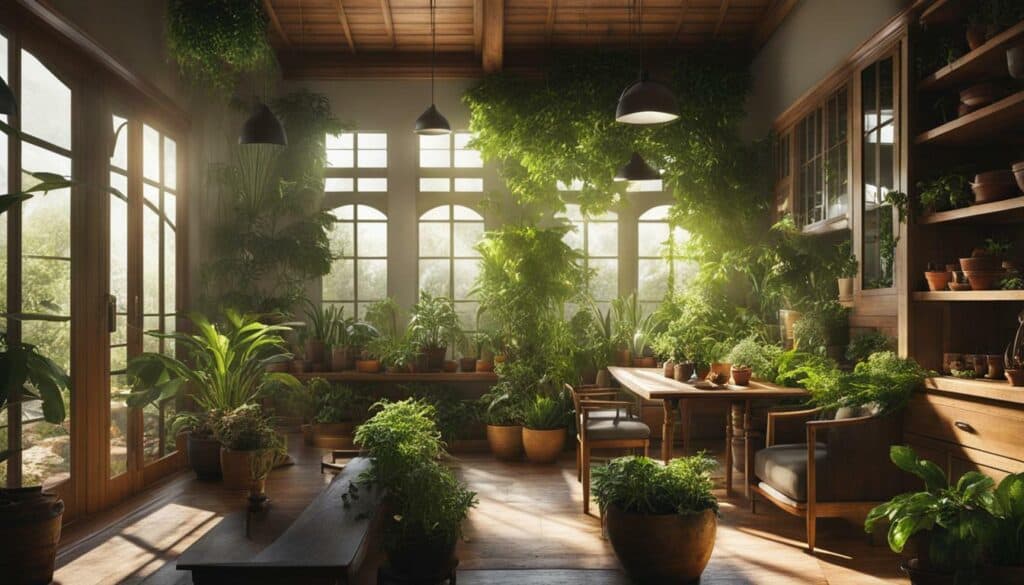
Year-Round Planting and Harvesting Tips
With the right strategies and knowledge, you can enjoy a continuous harvest from your garden throughout the year. To start, choose beginner-friendly plants such as tomatoes, basil, and marigolds that align with your space and climate. Research optimal planting times for each season and select crops accordingly.
Understanding soil types, drainage, and nutrient balance is crucial for a flourishing garden. Composting kitchen scraps and garden waste can enhance soil fertility and reduce waste. Regular maintenance, including pruning, weed control, and pest management, is also important for a thriving garden.
Using the right tools and equipment, designing the garden layout for optimal sunlight exposure, and practicing precise watering techniques are essential for successful year-round planting. Watering frequency depends on plant type and weather conditions, so it’s important to monitor soil moisture levels and adjust watering accordingly.
Container gardening is a great option for those with limited outdoor space. Vegetables can be cultivated indoors, and succulents and herbs thrive on windowsills and counters. Beginners can start with plants like Sansevieria, succulents, peace lilies, and African violets. It’s important to choose plants that suit the environment and care style, considering factors like sunlight intensity and watering frequency. Proper watering involves using pots with drainage holes and watering until water drips out of the bottom. Sunlight exposure should be appropriate for the plant’s preferences, and signs of too much sunlight include wilting and brown, crispy leaves.
Harvesting should be done when fruits and vegetables are ripe. Different seasons require different plant varieties, so it’s important to research optimal planting times. Troubleshooting common issues and joining gardening communities can provide valuable guidance. Eco-friendly pest control methods should be explored before resorting to chemicals.
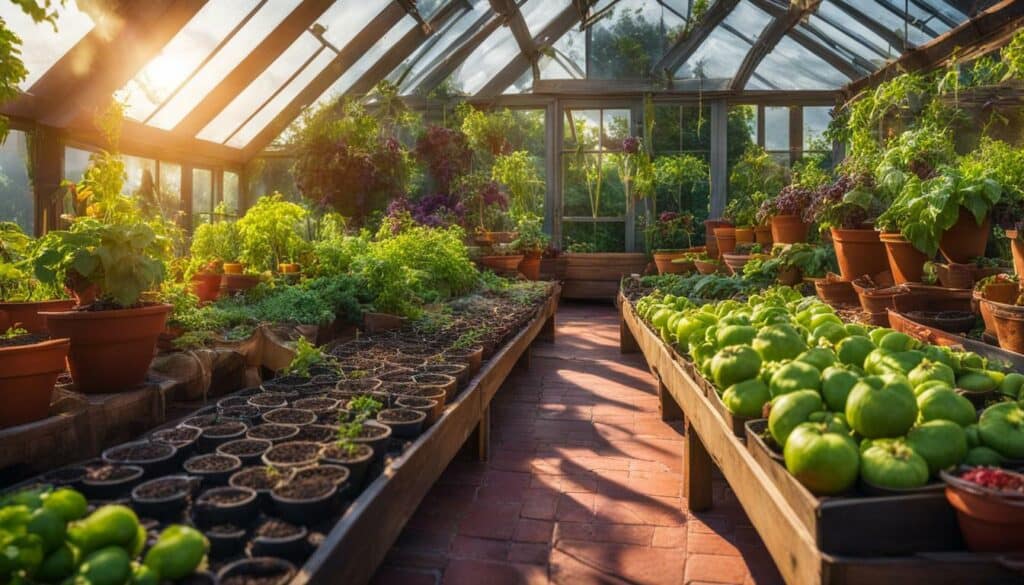
With practice and research, beginners can learn the basics of plant care and become successful gardeners. Whether cultivating a garden outdoors or indoors, year-round planting and harvesting can provide a continuous supply of fresh produce and a rewarding hobby.
Troubleshooting Common Issues and Joining Gardening Communities
As a beginner, it’s natural to encounter challenges along your gardening journey, but don’t worry – we’ve got you covered. Let’s explore some common issues and discover ways to overcome them while also finding support from fellow gardening enthusiasts.
One of the most critical aspects of successful gardening is identifying and addressing common issues such as yellowing leaves, pests, and diseases. Troubleshooting these problems effectively is crucial to maintaining healthy plants and maximizing yield. By educating yourself on the best practices for combatting these issues, you can stay ahead of any potential problems and keep your garden thriving.
Another great way to enhance your gardening skills is by joining gardening communities. Whether it’s online forums, local gardening clubs, or blogs, these resources offer a wealth of knowledge and experience from seasoned enthusiasts. By connecting with like-minded individuals, you can share experiences, gain insights into new gardening techniques, and find support in your gardening journey.
Joining gardening communities can also provide a great opportunity to participate in group projects such as community gardens or volunteering at local green spaces. These activities encourage collaboration and offer a chance to give back to your community while also honing your gardening skills.
So, don’t hesitate to get involved in gardening communities. By actively participating, you can overcome common issues, learn new techniques, and find support in your gardening journey. Happy gardening!
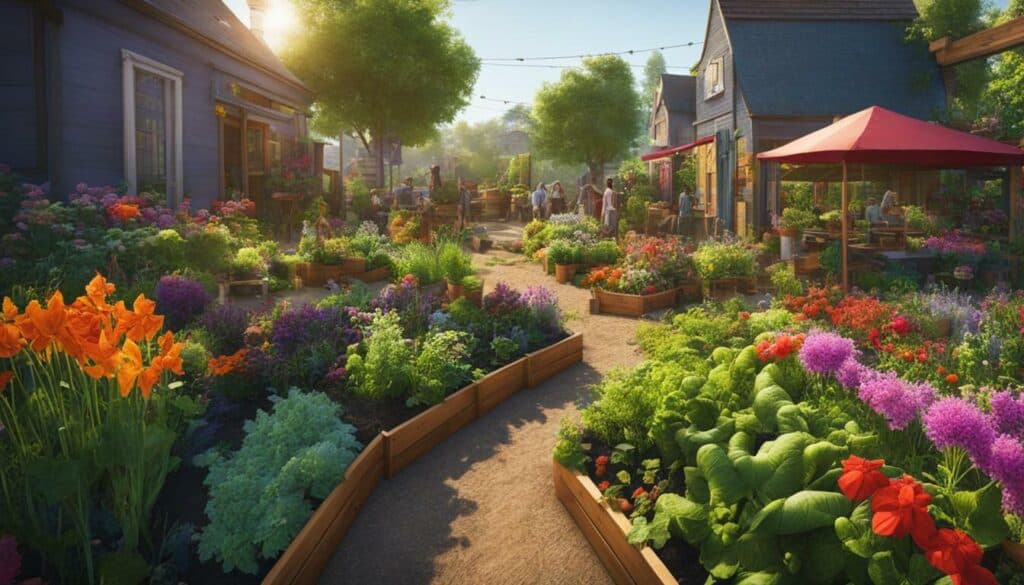
Conclusion
Congratulations! You have reached the end of the Green Thumb Journey: Comprehensive Planting How To Guide. Now armed with valuable insights and practical tips, it’s time to get your hands dirty and watch your garden flourish. Happy gardening!
In conclusion, gardening is a rewarding and fulfilling activity that allows people to reconnect with nature and nurture their own green spaces. Whether you have a large garden or a small balcony, there are numerous resources available to guide beginners on their gardening journey.
Start by selecting suitable plants for your particular climate and space. Understand the importance of soil science and composting to ensure healthy plant growth, and acquire the necessary tools and equipment for your gardening needs. Planning and designing your garden layout is also key, as is mastering watering techniques to keep your plants happy and hydrated.
When it comes to pest management, natural methods are always best, and exploring different garden styles such as indoor gardening can be a fun and exciting way to expand your gardening skills.
Joining gardening communities and seeking guidance from experienced enthusiasts can also enhance your knowledge and skills, making your gardening journey more enjoyable and successful.
Remember, with dedication and perseverance, a vibrant and thriving garden can be achieved, regardless of the limitations of outdoor space.
So what are you waiting for? Get out there and start planting! Happy gardening!
What are the Essential Plant Basics I Need to Know Before Starting My Green Thumb Journey?
Before embarking on your green thumb journey, understanding the essential plant basics is crucial. By discovering plant basics such as watering needs, sunlight requirements, and soil preferences, you can provide the best care for your plants. This knowledge will help you create a thriving garden and ensure your plants stay healthy and happy.
FAQ
Q: What does the Green Thumb Journey: Comprehensive Planting How To Guide cover?
A: The guide covers various topics such as selecting the right plants, soil science and composting, essential tools and equipment, garden layout and design, watering techniques, pruning, pest management, indoor gardening, year-round planting, harvesting tips, troubleshooting common issues, and joining gardening communities.
Q: Why is reconnecting with nature through gardening important?
A: Reconnecting with nature through gardening allows us to experience the joy of nurturing living things and helps us appreciate the beauty and vitality of the natural world around us.
Q: What tips does the guide provide for gardening in limited outdoor spaces?
A: The guide offers tips on maximizing limited outdoor spaces, including choosing compact plants, utilizing vertical gardening techniques, and making the most of container gardening.
Q: How often should I water my plants?
A: The watering frequency depends on various factors such as plant type, weather conditions, and soil moisture. The guide provides guidelines on how to determine the appropriate watering frequency for your plants.
Q: Are there natural methods for pest control?
A: Yes, the guide suggests natural pest control methods such as companion planting, using beneficial insects, and making organic pest sprays to protect your plants without relying on harsh chemicals.
Q: Can I grow vegetables indoors?
A: Absolutely! The guide includes tips on growing vegetables indoors, including choosing the right plants, providing adequate lighting, and ensuring proper ventilation and care.
Q: How can I troubleshoot common gardening issues?
A: The guide offers troubleshooting tips for common gardening issues such as plant diseases, nutrient deficiencies, and pest infestations. Additionally, it suggests joining gardening clubs and online communities to seek advice from experienced gardeners.
Q: What is the key takeaway from the comprehensive planting guide?
A: By following the tips provided in the guide, beginners can embark on a successful gardening journey and enjoy the rewards of their nurturing efforts in reconnecting with nature and cultivating their own green spaces.
Source Links
- https://plantcareforbeginners.com/articles/houseplants-101-how-to-get-a-green-thumb
- https://portfarms.com/finding-your-green-thumb/
- https://medium.com/@mohammed.touson/gardening-for-beginners-a-comprehensive-guide-to-cultivating-your-green-thumb-8bfd4f73e3a9
- https://www.realhomes.com/advice/how-to-choose-plants-for-your-garden
- https://www.provenwinners.com/learn/right-plant-right-place
- https://www.thespruce.com/plant-selection-for-the-landscape-2131865
- https://extension.illinois.edu/soil/composting
- https://www.epa.gov/recycle/composting-home
- https://source.colostate.edu/the-science-of-composting-and-how-to-do-it-from-home-this-summer/
- https://www.gardendesign.com/how-to/tools.html
- https://www.almanac.com/gardening-tools-guide
- https://www.washingtonpost.com/home/2023/02/28/essential-garden-tools/
- https://plantperfect.com/how-to-design-the-perfect-vegetable-garden-layout/
- https://www.prettypurpledoor.com/design-a-garden-layout/
- https://www.homesandgardens.com/advice/how-to-plan-a-garden
- https://www.thespruce.com/tips-for-watering-plants-5198467
- https://www.gardena.com/int/garden-life/garden-magazine/10-golden-rules-for-watering/
- https://www.gardeners.com/how-to/when-to-water/8108.html
- https://stumpplants.com/journal/pruning-guide
- https://www.thespruce.com/how-to-prune-houseplants-1902692
- https://www.thespruce.com/how-and-when-to-prune-plants-1403009
- https://gardenerspath.com/how-to/disease-and-pests/integrated-pest-management/
- https://extension.psu.edu/pest-management-methods
- https://www.bhg.com/gardening/pests/insects-diseases-weeds/garden-pest-control/
- https://www.planetnatural.com/growing-indoors/
- https://cornellfarms.com/blogs/houseplants/6-expert-tips-to-create-a-diy-indoor-garden
- https://growagoodlife.com/indoor-garden/
- https://bcfarmsandfood.com/10-tips-year-round-garden/
- https://www.growveg.com/guides/6-proven-strategies-for-year-round-harvests/
- https://www.tenthacrefarm.com/year-round-gardening/
- https://createthegood.aarp.org/volunteer-guides/community-garden.html
- https://www.foodnetwork.com/grilling/grilling-central-how-tos/common-garden-problems-how-to-fix-solve-them
- https://seewhatgrows.org/5-challenges-community-garden/
- https://sites.google.com/a/hanalani.org/growing/conclusion
- https://msutreehugger.weebly.com/chapter-v-conclusions-and-recommendations.html
- https://apkatay.wordpress.com/2009/08/05/3-propositions-and-a-conclusion-for-church-planters/

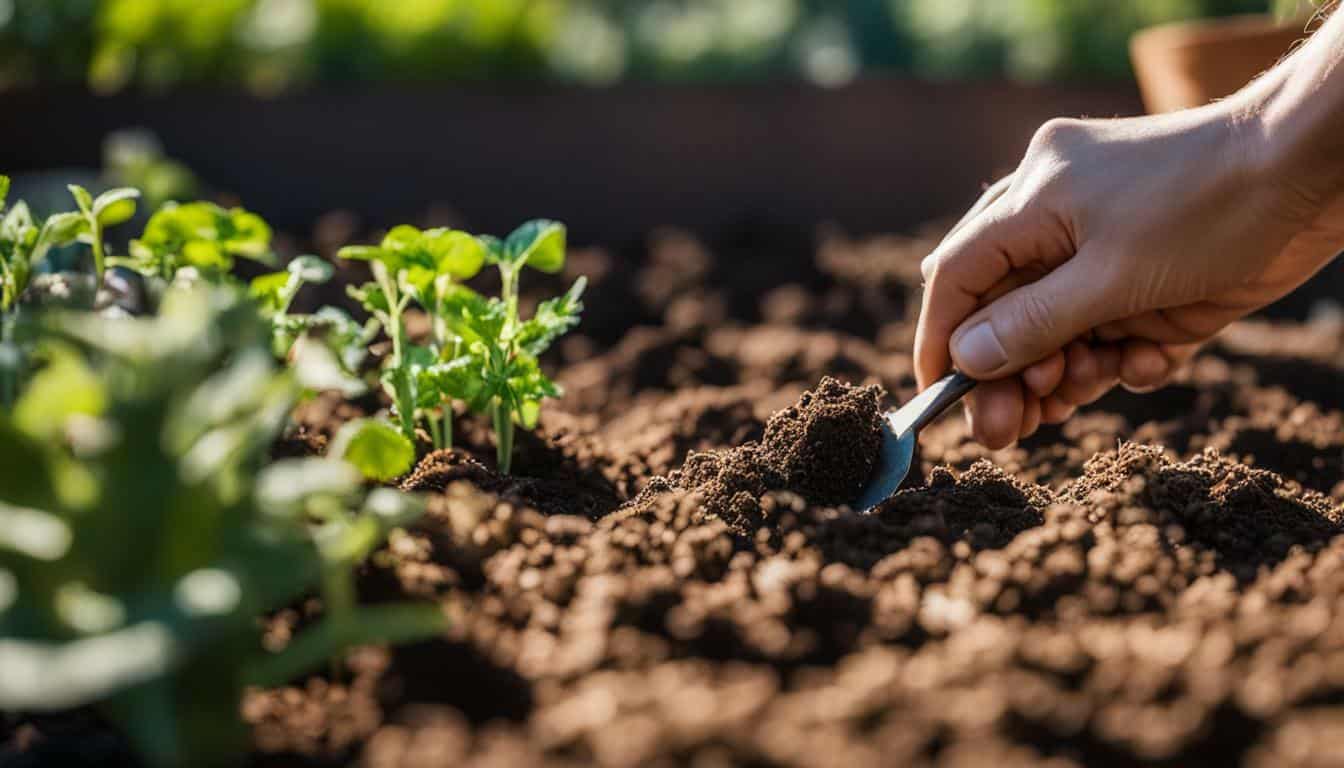



Leave a Reply